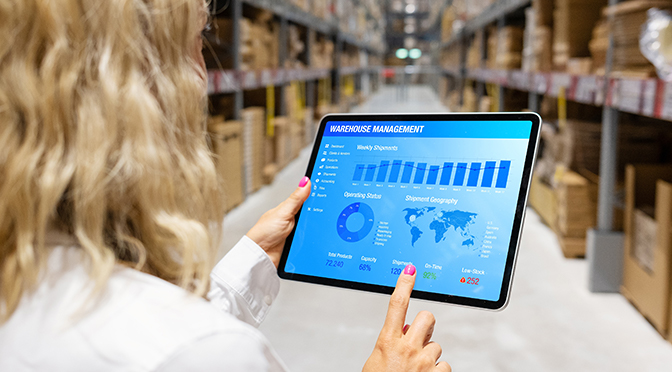Riding The Cloud – The Future Of Transportation Management System
Get In Touch
Your information is protected by our Privacy Policy and Terms of Use.
Our Offices
E 237, First Floor, Phase VIII B Sector-74,
Industrial Area, Mohali-160071, Punjab
Phone: +(91) 93010-10197
6470 East Johns Crossing, Suite 160
Johns Creek, GA 30097
531A, Upper Cross Street, #04-95,
Hong Lim Complex, Singapore - 051531
- Solutions For
- Solutions
- Services & Expertise
- Case Studies
- Insights
-
Get In Touch
Get In Touch
Your information is protected by our Privacy Policy and Terms of Use.
Our Offices
Zapbuild Technologies Private LimitedIndia
E 237, First Floor, Phase VIII B Sector-74,
Industrial Area, Mohali-160071, Punjab
Phone: +(91) 93010-10197Zapbuild Technologies (US) LLC United States
United States
6470 East Johns Crossing, Suite 160
Johns Creek, GA 30097
Zapbuild Technologies (S) PTE LTDSingapore
531A, Upper Cross Street, #04-95,
Hong Lim Complex, Singapore - 051531
- Learning Management System
- Command and Control Center
- Transportation Management
- Warehouse Management
- Fleet Management
- Supply Chain Management
- Document Contracts Management
- Load Board Platform
- Route Optimization
- Electronic Proof Of Delivery
- Freight Exchange Platforms
- Customer Relationship Management
- Data Analytics and Business Intelligence
- Logistics Aggregator
- Crowdshipping Marketplaces
- Reverse Logistics Marketplace
Scale Up Without Losing Control: How a WMS Empowers Growth for 3PLs

In the rapidly growing world of commerce, 3PL providers grapple with the surging demand for efficient warehousing operations.
As a 3PL (third-party logistics) provider, you understand the challenges of meeting this demand while maintaining control and efficiency in your operations.
According to G2’s Warehouse Automation statistics, “The adoption of Warehouse Management Systems (WMS) is on the rise, with 89% of organizations planning to leverage modernized WMS for labor planning and management by 2024”.
Wondering how a warehouse management system can help grow your business? In this article, we’ll explore how a WMS can empower the growth of your 3PL business while helping you overcome common warehousing challenges.
What is a 3PL Warehouse Management System?
A 3PL Warehouse Management System (WMS) is a software solution designed to help third-party logistics providers manage warehouse operations efficiently.
It encompasses functions like inventory management, order fulfilment, and tracking goods.
Essentially, a 3PL WMS optimizes storage space, improves picking and packing processes, and enhances overall warehouse accuracy, efficiency, and productivity.
Top Warehousing Challenges for 3PL Companies
As a 3PL provider, you face several challenges in managing warehouse operations effectively. These challenges include:
Integration Complexity
Integrating systems with clients and partners is crucial for efficient order fulfilment. However, it can be complex due to disparate technologies and legacy systems.
This complexity often leads to delays in implementation and increased costs. Ultimately, it hinders seamless information exchange and collaboration across the supply chain.
Data Security
Data security for 3PL companies is paramount because they handle sensitive customer and shipment information.
However, with the rise of cyber threats and stringent regulatory requirements like GDPR, maintaining data privacy and compliance becomes challenging. Breaches in data security can damage trust with clients and result in severe consequences.
Inventory Accuracy
Good inventory management is important for 3PL companies to meet client demands and prevent overstock situations. Manual tracking methods can lead to discrepancies in inventory levels and impact order fulfilment.
Therefore, it’s vital to Implement robust inventory management systems to maintain accuracy and efficiency in warehouse operations.
Scalability
3PL companies often face challenges in scaling their warehouse operations to accommodate growing client demands.
However, scaling operations without compromising efficiency and service quality can be challenging and requires strategic planning and investment in infrastructure and technology.
Labor Management
It’s important for 3LP companies to effectively manage their warehouse staff to optimize productivity and smoothly run operations.
However, fluctuating demand, seasonal peaks, and labor shortages can pose significant challenges for these companies.
How a WMS Can Help Grow Your 3PL Business
Implementing a WMS can address these challenges and empower the growth of your 3PL business in several ways:
Improved Operational Efficiency
A WMS streamlines your warehouse processes by automating tasks and providing real-time visibility into operations. Instead of manually tracking inventory movement, a WMS uses barcode scanning or RFID technology to accurately record stock levels and locations.
With a WMS, you can handle large volumes of orders efficiently by reducing errors and speeding up processes.
For example, if you receive an order for multiple products, the WMS can optimize the picking process by providing the most efficient route for your warehouse staff to gather items, minimizing travel time and increasing productivity.
One real-world example of improved operational efficiency through custom WMS is Amazon, the worlds’ biggest e-commerce company. Amazon has used warehouse management systems to manage a vast network of its warehouses worldwide. Amazon has been using WMS to fulfil orders efficiently, optimize inventory, and streamline its supply chain operations. All this helped Amazon to provide fast shipping and maintain high customer satisfaction levels.
Better Inventory Management
With a WMS, you can maintain accurate inventory records, track stock levels in real time, and optimize inventory storage.
For example, if a 3PL provider stores perishable goods, the WMS can implement a First-In-First-Out (FIFO) inventory management policy to ensure that older stock is used first, reducing the risk of spoilage.
Additionally, the WMS can generate alerts when inventory levels are low. This feature enhances operational efficiency and customer satisfaction within the warehouse environment.
Consider the case of Walmart, which has invested heavily in WMS to improve inventory accuracy, reduced stockouts, and optimized warehouse processes. This has helped Walmart better manage its inventory levels, reduce costs, and meet customer demand more effectively.
Enhanced Labor Management
A WMS helps optimize labor resources by intelligently assigning tasks, scheduling workflows, and providing insights into workforce performance. If a 3PL provider experiences peak demand during certain times of the year, the WMS can dynamically adjust staffing levels to meet increased workload requirements.
Moreover, the WMS can identify potential safety hazards in the warehouse environment, such as blocked aisles or obstructions, and provide recommendations for mitigating risks to ensure a safe working environment for employees.
Cost Reduction
By optimizing space utilization and minimizing operational inefficiencies, a WMS can help reduce overall warehouse operating costs. For example, if a 3PL provider implements slotting optimization algorithms within the WMS, it can maximize the use of available storage space by strategically placing fast-moving items closer to the shipping area for quicker access.
Besides, the WMS can analyze historical data to identify areas where cost savings can be achieved, such as reducing excess inventory or consolidating warehouse operations to minimize transportation costs.
Waste Reduction
A WMS helps minimize waste by enforcing inventory management policies and providing visibility into product expiration dates. If a 3PL provider manages inventory for a retailer selling perishable goods, the WMS can automatically flag items nearing their expiration date for prioritized fulfilment, reducing the likelihood of product spoilage.
By implementing automated replenishment processes and optimizing inventory turnover rates, the WMS can help prevent overstock situations and minimize excess inventory, leading to cost savings and improved sustainability.
Beaver Street Fisheries saw substantial benefits from implementing the Warehouse Management System. The WMS led to a 97 percent inventory accuracy improvement, a 60 percent reduction in average picking time, and a drop in picking errors from 5 percent to less than 1 percent. Additionally, it helped decrease workforce overtime and lowered returns for custom orders, resulting in enhanced operational efficiency and customer satisfaction.
Boosted Customer Satisfaction
A WMS contributes to improved customer satisfaction by streamlining order fulfilment processes and ensuring accurate, on-time deliveries.
For instance, if a 3PL provider integrates their WMS with a customer relationship management (CRM) system, they can provide customers with real-time order status updates and shipment tracking information, enhancing transparency and communication.
By optimizing inventory management and reducing order processing times, the WMS helps fulfil customer orders more efficiently, leading to higher levels of satisfaction and repeat business.
Enhanced Supplier Relationship
Effective supplier relationship management is crucial for maintaining a reliable and efficient supply chain. A WMS facilitates enhanced communication and collaboration with suppliers by providing real-time visibility into inventory levels, demand forecasts, and order requirements.
For example, if a 3PL provider integrates their WMS with suppliers’ systems, they can share demand forecasts and inventory data, enabling suppliers to plan production and deliveries more effectively. By fostering transparent and proactive communication, the WMS strengthens supplier relationships, promotes trust, and ensures a steady supply of goods, ultimately benefiting both parties involved.
Real World Examples of WMS Successful Implementation
Here are some real-world examples of companies that have implemented WMS and experienced significant benefits:
Amazon: One of the biggest e-commerce companies, Amazon, uses warehouse management systems to manage a vast network of its warehouses worldwide. Amazon has been using WMS to fulfil orders efficiently, optimize inventory, and streamline its supply chain operations. All this helped Amazon to provide fast shipping and maintain high customer satisfaction levels.
Walmart: Another retail giant, Walmart, has invested heavily in WMS to enhance its supply chain operations. By using advanced WMS technology, Walmart has improved inventory accuracy, reduced stockouts, and optimized warehouse processes. This has helped Walmart better manage its inventory levels, reduce costs, and meet customer demand more effectively.
FedEx: Like Walmart, FedEx leverages WMS to optimize its warehouse operations and enhance its logistics capabilities. By implementing WMS, FedEx can better manage inventory, improve order fulfilment accuracy, and reduce order processing times. This has helped FedEx maintain its reputation for reliable and timely deliveries.
How to Choose The Right 3PL Warehouse Software For Your Organization
When selecting a WMS for your 3PL business, consider factors such as your specific business needs, scalability, integration capabilities, user-friendliness, future relevance, cost analysis, and vendor reputation.
Evaluate potential solutions based on these criteria, test the software through demos or trials, and gather feedback from other users before deciding.
Get a 3PL Warehouse Management Solution with Zapbuild
Zapbuild offers a comprehensive WMS solution tailored to the needs of 3PL providers. We are a trusted 3PL warehouse management solution development company that designs, develops, and delivers the most advanced WMS software for 3PL businesses.
With Zapbuild Technologies, you can scale up your 3PL operations without losing control, ensuring efficient warehouse management and customer satisfaction.
Conclusion
A WMS is a powerful tool that can empower the growth of your 3PL business by addressing common warehousing challenges and improving operational efficiency.
Seize the potential of WMS and elevate your 3PL business to new heights of success with the right solution. By choosing the right WMS solution and leveraging Zapbuild’s expertise, you can scale up your operations while maintaining control and delivering exceptional service to your clients.
- Compliance & Regulation
- DOOH (Digital Out-of-Home)
- E-Learning & Training Management
- Featured Blogs
- Fleet Management
- Latest Insights
- Logistics
- Supply Chain
- Transportation
- Trending
- Warehouse Management

Looking to build future-ready technology solutions for your transportation or logistics business? Connect with our experts for a free consultation today connect@zapbuild.com
Categories
Trending


5 Ways AI is Revolutionizing Supply Chain Management
Subscribe to our newsletter
Related Insights

Warehouse Management
10 Great Ways A WMS Can Help Improve Customer Satisfaction

Fleet Management
The Rise of Hyperlocal Delivery: How Zapbuild is Enabling Same-Day Service

Warehouse Management
What is Warehouse Management System (WMS): Everything You Need Know

Featured Blogs
How to Efficiently Manage Inventory for Streamlined Warehouse Operations
Connect with Our Experts
Take the first step toward the digital transformation of your Transportation and Logistics business.
Get a Free Consultation with Zapbuild’s technology experts today.
